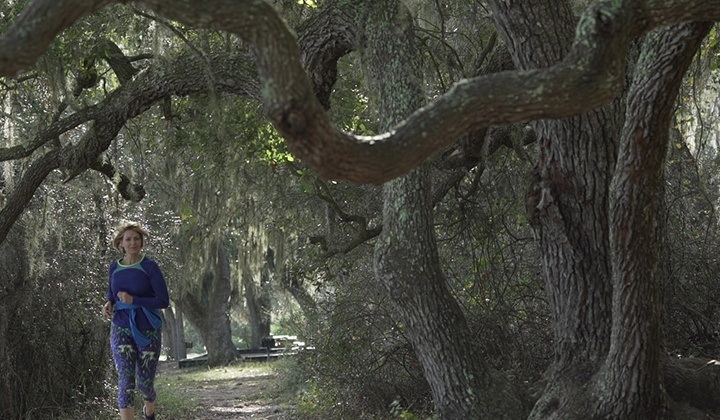Hiking in Florida is unlike anywhere else in North America.
That’s because Florida’s tropical climate creates an environment that’s ideal for the state’s unique flora and fauna. From reptiles to birds and plants, visitors are often amazed by the biodiversity they witness on nature hikes in Florida.
Here are the top five things to look for on a nature hike in Florida:
- Alligators. Hiking in Florida wouldn’t be complete without sighting the state’s most famous reptile, the American alligator. Alligators have inhabited Florida’s marshes, swamps, rivers and lakes for centuries and can be found in all 67 counties, according to the Florida Fish and Wildlife Conservation Commission. Alligators are opportunistic feeders and adults eat fish, snakes, turtles, small mammals and birds. It is dangerous and illegal to feed or harass alligators, which can grow to as long as 14 feet. Since 1948, there have been five unprovoked alligator bites each year on average, so exercise caution and keep your distance. Be attentive near water, including ditches and ponds.
- Birds. Tourists flock to Florida in the winter months to spy white pelicans, roseate spoonbills and numerous other birds that inhabit the woods, shorelines and waterways. For example, there are birds such as the limpkin that you’ll only see in Florida. It’s a long-legged species of water bird that has dark-brown feathers with streaks of white on its head and neck. Limpkins feed primarily on apple snails and nests in marshes and trees from February until June. Limpkins can grow to be 28 inches long. The Florida Ornithological Society has useful information on birds you can spot on your hikes here http://www.fosbirds.org/. At Babcock Ranch, you’ll see many of the bird species that have been sighted by the Florida Fish and Wildlife Commission at the nearby Fred C. Babcock-Cecil M. Webb Wildlife Management Area listed here https://myfwc.com/recreation/lead/babcockwebb/wildlife/. The website describes the habitats where you’re likely to find the birds, when they breed and whether they migrate or stay in the area year-round.
- Wildflowers. You may be surprised to learn that 175 plants are endemic to Florida and are found nowhere else in the world, according to the Florida Wildflower Foundation. Florida has the third-largest diversity of wildflowers in the nation, so it’s no surprise that Spanish explorer Juan Ponce de Leon named the area where he landed “La Florida” in March 1513. Florida’s official wildflower is the Coreopsis, more commonly called Tickseed. Most of the 16 species of Tickseed are native to Florida and grow in the northern part of the state. You can learn more about the state’s wildflowers on the foundation’s website http://flawildflowers.org/.
- Palms. Seasoned hikers know their palms. In Florida, there are 11 native palms that are also found in other areas of the Southeast U.S. From the needle palm to the cabbage palm and saw palmetto, you’ll learn to identify them. The Lee County Extension Office has a handy reference guide with photos of each of the 11 native palms here http://lee.ifas.ufl.edu/Hort/GardenPubsAZ/Florida_Native_Palms.pdf .
- Wildlife. Florida’s weather and terrain are perfect for all kinds of wildlife, from bears to panthers, otters and gopher tortoises. The Florida Fish and Wildlife Conservation Commission has a useful website with information on the species you might see, including the ones that the state actively manages https://myfwc.com/wildlifehabitats/ . For example, you’re likely to come across gopher tortoises, an endangered species that digs deep burrows for shelter.
To learn more about Babcock Ranch and the amazing nature trails it has to offer, visit us today or call (877) 484-4434 for more information.





